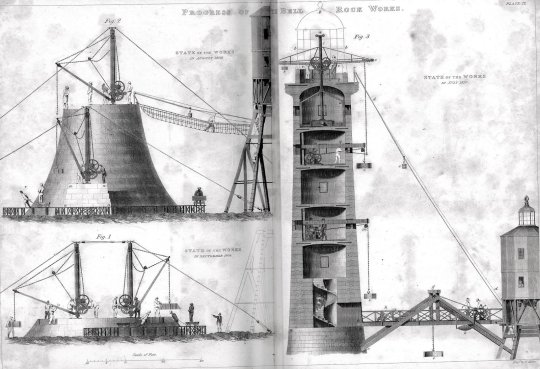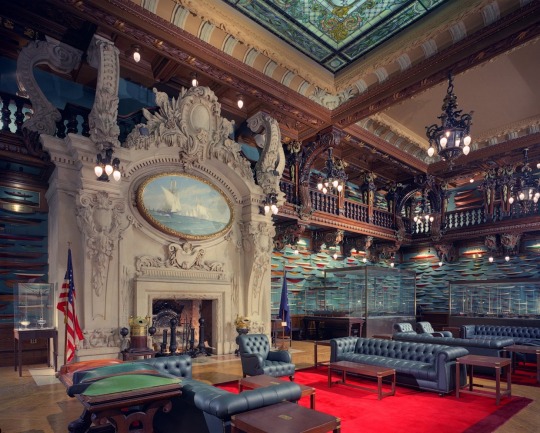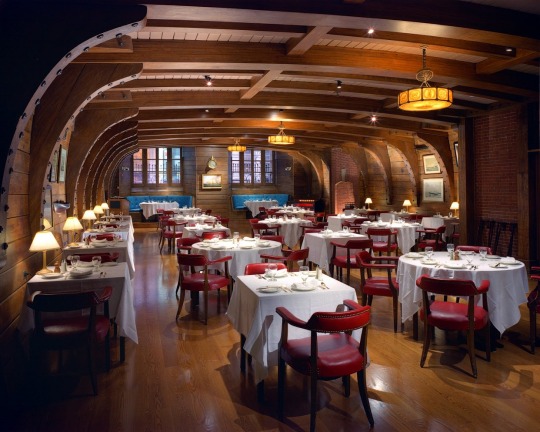#stone dutch model
Explore tagged Tumblr posts
Text
The 100 songs that changed metal (by Metal Hammer)
74. Within Temptation – Ice Queen (Mother Earth, 2000)
In the 90s, symphonic metal was more a glittering garnish than a scene in itself, something bands from Therion to Celtic Frost would sprinkle on their music to make it sparkle. And while the genre would start coming together into something more tangible towards the end of the decade, it wasn’t until a few years later that a song would emerge to put symphonic metal on the map.
That song was Within Temptation’s Ice Queen. A complete volte-face from the gothic doom of the Dutch metallers’ 1997 debut, Enter, it appeared on the follow-up, Mother Earth, in a flurry of lavish arrangements and fairytale histrionics. Buoyed by vocalist Sharon den Adel’s crystalline voice, it pushed metal towards a new frontier, quickly whipping up a buzz in mainland Europe. Ice Queen can take credit for being symphonic metal’s first major hit, pushing women to the forefront and influencing a brand new generation of bands.
81. Evanescence – Bring Me To Life (Fallen, 2003)
Evanescence’s debut single, Bring Me To Life, turned vocalist Amy Lee into a megastar. Arriving in 2003, when mainstream music was dominated by hyper-masculine men and overly sexualised pop stars, with her billowing long skirts, corset tops, arm socks and steely self-confidence, Amy redefined what a female artist could be, becoming a role model for millions of misfits and dreamers everywhere.
Despite its crunchy guitars and a rapped verse, courtesy of 12 Stones’ Paul McCoy – which Amy has since said she was forced to add by their label – Bring Me To Life’s cobwebby, goth fragility also brought something fresh to nu metal’s dick-swinging party, extending the mainstream’s flirtation with the genre for a little longer – as of 2019, it’s sold more than 3 million copies and has passed more than a billion streams on YouTube and Spotify.
82. Arch Enemy – We Will Rise (Anthems Of Rebellion, 2003)
We Will Rise was a huge song, not only for Arch Enemy but for the new generation of 21st-century melodic death metal they spearheaded. Guitarist Michael Amott had already laid down the melodeath blueprints with Carcass, while Arch Enemy themselves had already made three albums with singer Johan Liiva, but neither they nor anyone else had made an anthem quite like this.
As well as propelling the genre as a whole to greater heights and popularity, it provided a bigger platform for Angela Gossow – a hugely influential figure and one of the first prominent female vocalists to not only try but absolutely nail an extreme metal style. “Her emergence as a metal vocalist was, without hyperbole, revolutionary,” Svalbard’s Serena Cherry told us recently, and we’re not arguing.
84. Nightwish – Nemo (Once, 2004)
Nightwish didn’t invent symphonic metal, but alongside peers Within Temptation and Epica, they popularised it and packaged it to the masses. By 2004, the Finns had already established themselves as a major player in Europe, but with the sumptuous Nemo, they broke through on an unprecedented level.
No longer a niche concern in the geeky corners of the metal world, symphonic metal, in all its lavish, overwrought glory revelled under a global spotlight. Nemo’s fantastical magic, sparkling piano refrain and stirring melody has endured – it’s still the band’s best-known song – but its lasting image comes via its gothic music video, and then-singer Tarja Turunen singing in the snow in a blood-red coat. Nemo showed metal at its most fragile and beautiful.
95. Babymetal – Gimme Chocolate!! (Babymetal, 2014)
If elitists were tearing their hair out at the likes of Ghost, Bring Me The Horizon and Limp Bizkit being considered ‘metal’, then they might as well have just reached for the clippers for this one. The sight of three young Japanese girls rocking choreographed moves and singing sugary-sweet, J-pop-infused choruses about chocolate over heavy metal riffs was as shocking as it was delightful.
Babymetal hadn’t just broken the mould for metal, either; they’d given the West a fuller glimpse into the uniquely Japanese phenomenon of idol culture, and given the cutesy world of Kawaii a bigger global platform than ever. Overseen by band mastermind and producer extraordinaire, Key ‘Kobametal’ Kobayashi, Babymetal were unlike anything our world had seen before: equal parts hyper-polished girl band and full-on heavy metal experience, with their mysterious Kami Band backing musicians as formidable as any ‘proper’ metal band you could name.
Cynics moaned, but with the likes of Rob Halford, Metallica and Corey Taylor throwing in their support, the trio quickly transcended their ‘gimmick’ tag to become a legitimate force in the modern metal landscape.
99. Spiritbox – Holy Roller (Eternal Blue, 2022)
Spiritbox were already firmly established as Ones To Watch by the time Holy Roller, the first single from Eternal Blue, exploded like a hand grenade in the summer of 2020. Once those first, colossal riffs rang out, however, it was clear that the Canadian troupe hadn’t just levelled up considerably – they had successfully repositioned themselves as one of the most exciting and vital bands of their generation.
Backed by a memorable video inspired by Ari Aster’s disturbing Midsommar movie, Holy Roller was the perfect crystallisation of the last decade-plus of evolution in metal, packing djent, metalcore, nu metal and more into a massively crushing (but seriously catchy!) three minutes. “This song was never intended to be a single,” explained vocalist Courtney LaPlante later. “Our mission statement was, ‘Let’s make the most ridiculous song that we can.’”
#sharon den adel#within temptation#amy lee#evanescence#angela gossow#arch enemy#tarja turunen#nightwish#babymetal#courtney laplante#spiritbox
64 notes
·
View notes
Text



The Bell Rock Lighthouse, off the coast of Angus, was first lit on the 1st of February 1811.
Over 200 years after it was first built, the Bell Rock Lighthouse still stands - proudly flashing its warning light. Eleven miles out to sea off the east coast of Scotland, it is a remarkable sight - a white stone tower over 30m (100ft) high, rising seemingly without support out of the North Sea.
In fact, it is precariously poised on a treacherous sandstone reef, which, except at low tides, lies submerged just beneath the waves.
The treacherous reef on which it stands is in the North Sea, between the Firths of Forth and Tay, some 12 miles south of Arbroath and 14 miles south east of St Andrews. The red sandstone outcrop is 435m long and the lighthouse is founded on the main section, 130m long and 70m wide, and only 1.2m above the surface at low water spring tide.
The reef was known originally as Inchcape Rock or Cape Rock. According to tradition, in the 14th century the Abbot of Aberbrothok (Arbroath) placed a floating bell on it to warn mariners, hence its present name. Legend has it that sometime later a Dutch pirate removed the bell but he was later shipwrecked and perished on the same reef. The rocks were dangerous to ships sailing along the east coast of Scotland and by the end of the 18th century the need for a lighthouse was clear.
A severe storm in December 1799, in which about 70 vessels were wrecked, prompted Stevenson to propose a beacon-style lighthouse on six cast iron pillars.
Stevenson submitted a scale model of his idea to the Northern Lighthouse Board in summer 1800 — accurate physical modelling was to become something he often employed subsequently on important projects.
Stevenson drew the inspiration for his lighthouse design from the Eddystone Lighthouse, off the coast of Cornwall.
Built 50 years earlier by John Smeaton, this was a milestone in lighthouse design. Shaped with the now classic wide base, tapering to a narrow tower (Smeaton had modelled it on an oak tree he had witnessed defying a storm), it was the only off-shore structure that had until then managed to survive for any length of time against the constant battering of the seas.
Stevenson elaborated on this design. His lighthouse would have to be higher, over 30m (100ft), if it was to survive the cruel waves of the North Sea. He also incorporated more efficient reflectors, using the latest oil lighting technology, which would make his beacon the brightest yet seen.
But the Northern Lighthouse Board rejected the plan outright; in their eyes Stevenson was attempting the impossible, and besides, it was going to cost the huge sum of £42,685 and 8 shillings.
The rock had to claim another victim before the Board revisited Stevenson's plans. In 1804 the huge 64-gun HMS York was ripped apart on the rock, with the loss of all 491 crew. The NLB could delay no longer. Britain's most eminent engineer, John Rennie, was invited to give his advice.
Rennie had never actually built a lighthouse, but the Board was so impressed by his record that he was given the job of chief engineer. Robert Stevenson was to work as his resident engineer.
History does not record Stevenson's reaction to the news, but it must have come as a bitter blow to this ambitious young man. What history does record is that the structure on Bell Rock came to be known not as Rennie's but as Stevenson's Lighthouse.
Work started in 1807 and what followed was a four-year epic, with work severely restricted by tides that on occasion submerged the rock’s surface to twelve feet. The offshore activity only proceed during the summer months, and even then only with difficulty. Poor weather in the summer of 1808 allowed only 80 hours of work were completed.
To avoid time lost in shuttling workers to and fro Stevenson built a temporary wooden “Beacon House” on the rock and this served as both a base of operations and living quarters for fifteen men. As this structure (see illustrations) was also exposed to storms during the construction period, residence on it must have in itself have been a nightmare. During the winter months Stevenson kept his crews busy ashore, dressing the individual granite blocks needed for the tower. The total number required was some 2500 and all were drawn to the dockside by one of the unsung heroes of the project, a horse called Bassey.
The lighthouse came into service in 1810 and was to fulfil its purpose very effectively. Between then and 1914 only a single ship was lost on the rock, a steamer called the Rosecraig that ran aground during a fog in 1908, fortunately without loss of life.
The light has now operated for 212 years and has undergone many significant and ingenious upgrades and changes, some of them even being undertaken by non-Stevenson engineers. It was a manned light for 177 years, the lives of those keepers on their temporary Alcatraz being a source of equal fascination
The lighthouse was manned until 1988, when the station turned automatic and the last men were withdrawn.
55 notes
·
View notes
Text
EPICA's SIMONE SIMONS Releases Music Video For Second Solo Single 'In Love We Rust'

EPICA singer Simone Simons has released the official music video for her second solo single, "In Love We Rust". The track is taken from her debut solo album, "Vermillion", which will be made available on August 23 via Nuclear Blast Records.
Simone, who has been a pioneering force within the world of metal for over two decades as part of EPICA, worked on "Vermillion" with her musical partner and longtime collaborator Arjen Lucassen (AYREON).
Arjen is no stranger to Simone's soaring operatic voice, one that can stir even a gargoyle's stone heart to tears. Together they have crafted a sonic universe that befits the influential figure she is. "Vermillion" emerges as a gargantuan goose-bump generator, a universally touching, stellar tour de force.
Simone and Arjen state about "In Love We Rust": "The video was filmed in just one take to keep it as pure and raw as possible. We opted to keep it in black and white so as not to distract from the song or the performance.
"'In Love We Rust' is quite different from our first single 'Aeterna', which shows how diverse this album is. This is one of our favorite songs. We hope you love this as much as we do."
For more than 20 years, ever since she was a teenager, Simons has been carving her own path as a woman within the world of metal. As a lead singer, icon, and role model for a whole generation of female metalheads, the EPICA lead singer remains one of the most prominent key figures in all things metal. After eight albums and countless global tours with her band, Simone Simons finally found the time to release her first solo album — a moment 15 years in the making. Her breathtaking debut "Vermillion" is a stunning feat chronicling her storied past as well as her rise to fame, and showcasing her many different influences ranging from prog rock to film scores to metal to electronic elements.
Of the timing for her eagerly awaited foray into the realms of a solo career, the Dutch singer says with a disarming grin: "EPICA has my priority and I always have the liberty to do other musical projects besides my career in EPICA. Yet I never had the time to dive into a project to this extent."
When "Aeterna" was first released a month ago, Simone and Arjen stated: "'Aeterna' is the big, epic opener of the album and it comes with this amazing video too, directed by Patric Ullaeus. It definitely sounds the closest to EPICA and AYREON, blending powerful Latin lyrics with a touch of an oriental feel. We've tried to strike a balance between the mighty, bombastic sounds and the more atmospheric parts. Since it's the first track people will hear from this album, it's super important to us and we're really excited for people to hear it!
"'Aeterna' takes the point of view of a star about to go supernova to explore how everything in the universe is interconnected, like a cosmic web made from stardust. It deals our deep emotions, consciousness and other mysteries of life that science still can't fully explain. Essentially it's a reflection on our place in the vast universe and the connections that bind us together, as we're all, to quote Carl Sagan, 'made of starstuff.'"
"Vermillion" track listing:
01. Aeterna 02. In Love We Rust 03. Cradle To The Grave (feat. Alissa White-Gluz) 04. Fight Or Flight 05. Weight Of My World 06. Vermillion Dreams 07. The Core 08. Dystopia 09. R.E.D. 10. Dark Night Of The Soul
This past March, Simone told Mexico's Summa Inferno that EPICA's follow-up to 2021's "Omega" album will likely be released in 2025.
"I love the songs so far that we've written," Simone said. "There's more [songs that have been written] than fit on the album. So it's gonna be cool. And we won't tour that much this year. So we are focusing on the EPICA album and the 'Symphonic Synergy' shows [where EPICA will play alongside an orchestra], which is a lot of work."
In November 2022, EPICA released "The Alchemy Project" through Atomic Fire Records. The EP was co-written and performed with diverse guests ranging from extremists like FLESHGOD APOCALYPSE, Niilo Sevänen (INSOMNIUM) and Björn "Speed" Strid (SOILWORK) along with melodic masters like Tommy Karevik (KAMELOT),keyboard legend Phil Lanzon (URIAH HEEP) and Roel Van Helden (POWERWOLF) to a once-in-a-lifetime song with Simons, Charlotte Wessels and Myrkur.
Just one day after the release of its anniversary reissues "We Still Take You With Us" and "Live At Paradiso", EPICA celebrated 20 years of existence live in September 2022 at 013 in Tilburg, Netherlands, the same place where they played their first show (supporting ANATHEMA) back in 2002.
EPICA was formed by guitarist/vocalist Mark Jansen after leaving AFTER FOREVER in 2002, and the band quickly gained attention outside their home country, taking big steps towards becoming the leading symphonic metal superpower they have long proven to be. After their ambitious debut "The Phantom Agony" (2002) and the surprisingly eclectic sophomore work "Consign To Oblivion" (2005),the road took them to new heights via their first concept masterpiece "The Divine Conspiracy" (2007) and their global breakthrough "Design Your Universe" (2009). 2012's opus "Requiem For The Indifferent", 2014's bedazzling "The Quantum Enigma" and "The Holographic Principle" (2016),cemented their reputation as not only one of the hardest-working metal bands in the business but also as one of the best. With "Omega", the final part of the metaphysical trilogy they began with "The Quantum Enigma", they reclaimed the throne without so much as the blink of an eye, amassing three million-plus streams during the first week of the album's release.
youtube
21 notes
·
View notes
Text
Hey so like, I wonder if TF2 Tumblr people know about the Hot Dogs, Horseshoes & Hand Grenades "Meat Fortress" crossover's unique weapons?
Basically there's this really in-depth VR gun simulator and it had an official TF2 crossover a while ago that's still getting new stuff added for it, and along with the default TF2 weapons (plus beta-inspired grenades with some original ones thrown in, and alternate ammo types for most weapon types, none of which I will be covering in this post for image-limit reasons) it also has a bunch of custom weapons made specifically for it!
Also yes, as you'd expect, they feel kinda weird to use compared to the more realistic options the game is based around.
Images and details below (both of which are from the wiki, since taking decent screenshots in VR is painful and also I don't remember everything about them because there's like 20).
(Please note that I'm using the wiki's classifications for what class each weapon belongs to; some of the "All Class" ones do seem to fit with specific classes, but they aren't counted as such. Sorry. Also the wiki is a Fandom one. Again, sorry.)
All-Class
All Rounder

Type: Battle Rifle
Calibre: 10.5x35mm Dutch
Inspiration: MAS 49/56
Backfielder

Type: Machine Pistol
Calibre: 11mm Mannchevskikovovichidev
Inspiration: N/A (based on the default TF2 pistol)
Big Boomer

Type: Break-Action Shotgun
Calibre: 2 Gauge Long
Inspiration: N/A (possibly the Doom 2016/Eternal version of the Super Shotgun, which lacks a stock)
FireWalker

Type: Machinegun
Calibre: 13x59mm Ogden
Inspiration: M1918 BAR
Noisemaker

Type: SMG
Calibre: 12x22mm MC
Inspiration: Vz.61
Ol' Reliable

Type: Pump-Action Shotgun
Calibre: 7 Gauge Stout
Inspiration: N/A (based on the default TF2 shotgun)
Pas De Deux

Type: Derringer
Calibre: .58 Ultralong Rifle
Inspiration: N/A (although it kinda looks to me like the Model 6 XL?)
Sound Check

Type: Semi-Auto Pistol
Calibre: .52 AMP
Inspiration: M1911A1 (name is a reference to a running gag in the developer-update videos)
Stone Thrower

Type: Assault Rifle
Calibre: 9x45mm Classic
Inspiration: AR-10
Vulture

Type: Semi-Auto Pistol
Calibre: 10.1mm SHhhhhhh
Inspiration: PSS Silent Pistol (it isn't in H3VR, so have a Wikipedia.)
Scout
Duckhunter

Type: Lever-Action Shotgun
Calibre: 13 Gauge
Inspiration: N/A (based on the default TF2 scattergun)
Pyro
Signaler

Type: Flare Gun
Calibre: 50mm Flare
Inspiration: N/A (based on concept-art for the TF2 Flaregun)
Demoman
The Long Shot

Type: Grenade Launcher
Calibre: Sticky Shell
Inspiration: N/A (based on the default TF2 Stickybomb launcher)
Heavy
Aerial Denier

Type: Machinegun
Calibre: 18x50mm Packawhollop
Inspiration: literally just a pair of GAU-19/A barrels slapped onto the default TF2 minigun
Sniper (who has the most weapons for some reason?)
Snag Sanger

Type: Bolt-Action Rifle
Calibre: 18x50mm Packawhollop
Inspiration: N/A (based on the default TF2 sniper rifle)
The Last Bit

Type: Bolt-Action Rifle
Calibre: 18x50mm Packawhollop
Inspiration: N/A (based on the default TF2 sniper rifle but it's been obrez'd look at it it's adorable!!!)
Bushranger's Boon

Type: Submachine Gun
Calibre: 12x32mm Dingowhomper
Inspiration: N/A (based on the default TF2 SMG)
Engineer
Rosie

Type: Battle Rifle
Calibre: 5mm Rivets
Inspiration: Remington Stud Driver Model 450 (which is obscure enough that you'll have to look it up yourself)
Medic
Medical-180

Type: Carbine
Calibre: Syringe
Inspiration: American-180
Spy
Le Petite Liaison

Type: Revolver
Calibre: .366 Ultramagnum
Inspiration: N/A (the H3VR wiki says it's a modified version of the default revolver, and I kinda see that, but there's enough differences that I kinda doubt that)
6 notes
·
View notes
Text
Birthdays 7.20
Beer Birthdays
Louis Hudepohl (1842)
Peter Adolph Schemm (1852)
George Reisch (1957)
Arne Johnson (1965)
Five Favorite Birthdays
Thomas Berger; writer (1924)
Stone Gossard; rock musician (1966)
Edmund Hillary; New Zealand mountaineer, explorer (1919)
Max Liebermann; German artist (1847)
Diana Rigg; actress (1938)
Famous Birthdays
Lola Albright; actor (1926)
Alexander the Great; Macedonian king (356 B.C.E.)
Giselle Bundchen; Brazilian model (1980)
Kim Carnes; singer (1945)
Chris Cornell; rock singer (1964)
Donna Dixon; actor (1957)
Desmond Douglas, Jamaican-English table tennis player (1955)
Omar Epps; actor (1973)
Judy Greer; actress (1975)
Nikolaes Heinsius the Elder; Dutch poet (1620)
Sally Ann Howes; actor (1930)
Erik Axel Karlfeld; Swedish poet (1864)
Periklis Korovesis; Greek author (1941)
Cormac McCarthy; writer (1933)
Alistair MacLeon; Canadian novelist (1936)
Clements Markham; English explorer (1830)
Gregor Mendel; Austro-German scientist (1822)
László Moholy-Nagy; Hungarian artist (1895)
Giorgio Morandi; Italian painter (1890)
Sandra Oh; actress (1971)
Petrarch; Italian poet (1304)
Richard Owen; English zoologist (1804)
Nam June Paik; artist (1932)
Francesco Petrach; Italian scholar (1304)
Tadeusz Reichstein; Polish-Swiss chemist *1897)
Wendy Richard; English actor (1943)
Carlos Santana; rock guitarist (1947)
T. G. Sheppard; country music singer-songwriter (1944)
Taichō; Japanese monk (682)
Frank Whaley; actor (1963)
Dean Winters; actor (1964)
Natalie Wood; actress (1938)
2 notes
·
View notes
Text




The New York Yacht Club had been around for nearly half a century in November of 1898 and, until then, was comfortably ensconced in a series of unpretentious clubhouses. As the century came to a close, however, a more suitable headquarters was required. From the Club's rooms on the second floor of a Madison Avenue townhouse, J. Pierpont Morgan started the ball rolling for a new location.
He announced that he would donate three lots on West 44th Street for the new building. In return for giving the land Morgan demanded to choose the committee that would select the winning design: himself. The guidelines for the architects were published on November 5 with a 30-day deadline for submissions. The new clubhouse must have a Model Room adequate to exhibit the Club's extensive collection, as well as doubling as a meeting room for up to 300 people. A Library was required that could archive 15,000 books and a Chart Room was necessary where members could map out their cruises.
Morgan's committee chose the design by the firm of Whitney Warren and Charles Wetmore--their first important commission. Whitney Warren produced the drawings and his ideas were unique at best. He wanted to reflect the nautical foundation on which the Club was built. His resultant five-story limestone-clad structure is exuberant Beaux Arts, overflowing with maritime themes. The Club, he explained, has a mission of furthering "naval architecture from the amateur point of view." And that he did.
Especially noticeable from the street are the three major windows fronting 44th Street. Mimicking the sterns of the Dutch galleons that first came to New York, they spill stone waves over the window ledge.
A large terrace on the fourth floor, covered by a heavy wooden pergola, looks enticing from street level.
Inside, Warren let go of any inhibitions. His Model Room sits directly behind the great galleon windows, is 100 feet deep, over two stories high and rests under an enormous and colorful stained glass ceiling. Free-standing sea monsters add support to the great marble fireplace, the centerpiece of which is a painted yachting scene. A balcony in the style of a galleon railing circles the room.
The Architectural Review, upon the Club's opening in 1901, was not pleased. It called the robust fireplace "a riot of swags and spinach, icicles and exotic vegetation." It was not, said the editors, "legitimate architectural design."
A bit kinder, The New York Times in 1906 said, "...except for the absence of motion, one might fancy oneself at sea."
The Grill Room took the theme and ran with it. Heavy oak timbers and cast iron bolts were intended to replicate the space below decks in a vintage sailing vessel. Here, at the turn of the century, the most notable names in New York finance and commerce ate and discussed sailing and business.
Despite Commodore Morgan's assertion about yachting that "If you have to ask how much it costs, you can't afford it," the building had to be paid for. Therefore the annual dues were doubled from $25 to $50.
The New York Yacht Club continues to be one of the most unusual and visually pleasing buildings in Midtown Manhattan.
2 notes
·
View notes
Text
As a model, may I suggest the Dutch city of Amersfoort?
Starting with their historical "Amersfoort stone", which was hauled into town on a bet (the reward for which was beer and pretzels), the area became famous for a large (and largely useless) stone.
As a joke, other towns began gifting Amersfoort more large stones. Now there are multiple boulders from other countries displayed around the medieval city center.
i think everyone deserves a large rock a short distance from their home. i dont like that discussions about walkable cities never include plans to allow wider access to large rocks. the people need large rock
45K notes
·
View notes
Text
Inside Lenny Kravitz’s Regal Paris Refuge

The rock star-designer has fashioned a spiritual tribute to family and friends inside this historic home
By Dana Thomas
A 1940’s German disco ball presides over the Chaufferie (Boiler Room) party space, which is furnished with vintage bistro tables and chairs from the Saint-Ouen Flea Market.
Superstar musician Lenny Kravitz has loved Paris since he first landed there in 1989, at 25, to promote his debut album, Let Love Rule.
Finally, in the early 2000s, he felt it was time to find a pied-à-terre:
“a little apartment, maybe on the Seine—one bedroom, two bedrooms, maximum—where I could write and hang out,” he recalls.
“One day, the real estate agent says, ‘I have something. It’s not what you’re looking for, but you need to see it.’ ”

“It” was the grand mansion of Countess Anne d’Ornano, the widowed former mayor of Deauville, a 1920s confection set on a leafy cul-de-sac next to a clutch of embassies in the conservative 16th arrondissement.
With her children grown, the countess found herself more at her Norman estate, with poetic gardens by Louis Benech, than in the Paris house, and had decided to sell.
“The agent said: ‘It’s not on the market yet, and this kind of thing only comes around once in a generation,’ ” Kravitz continues.
“I pull up, she points at the building, I said, ‘Okay, what floor?’ thinking it’s an apartment building. And she says, ‘It’s the whole thing.’ I said, ‘No, no, no, no, absolutely not.’ ‘Please, just go inside and look at it.’ I walked in and said, ‘This is my house.’ Spiritually, I knew.”
Lenny Kravitz, wearing a vintage jacket, Coût de la Liberté jeans, and a Jaeger-LeCoultre watch, atop a 1970s coffee table in the Grand Salon.
A 19th-century hand carved wood Senufo Bird sculpture stands next to a lithograph of Muhammad Ali by Andy Warhol. Art: © 2025
There was much to be done to convert the stately manor from a French aristocrat’s city residence to an American rocker’s crash pad, where he could spend half the year recording new music in a home studio, recovering from European tours, and spending time with Zoë, his now-36-year-old actor-model-filmmaker daughter with his former wife, actor Lisa Bonet. He spends the other half of the year at his compound in Eleuthera, Bahamas, and on occasion visits a ranch he owns in Brazil (AD, May 2019).
The garden façade of the early-20th-century Hôtel Particulier in Paris’s 16th arrondissement.
But Kravitz had the skills and the tools to make that transformation happen:
In 2003, he founded Kravitz Design, a studio that specializes in commercial and residential interiors, branding, and creative collaborations.
Over the years, the AD100 firm has worked with such corporate clients as Leica, Dom Pérignon, CB2, and Sushi Shop on various projects.
Five years ago, he partnered with Steinway & Sons to produce the Kravitz Grand, a limited-edition of handcrafted pianos in hard maple, Madagascar ebony, and bronze, with African-style wood carvings on the case and legs.
One sits at the foot of the sweeping staircase in his soaring entry hall, across from Jean-Michel Basquiat’s Untitled (Black Figure) from 1984.
Dressed in a black leather jacket, faded Nina Hagen T-shirt, well-worn jeans, and standing in his stockinged feet—no shoes in the house, thank you very much—Kravitz pads over to the Steinway and plays a few chords.
The notes gently reverberate off the vanilla stuc pierre (stone stucco) walls. “The sound in here is beautiful,” he says. “Gorgeous.”
A circa 1970 Brutalist wall-hung sideboard by Paul Evans on the grand stair landing.
On the grand stair landing, a pair of Jules Heumann chairs faces a Brutalist wall-hung sideboard by Paul Evans.
Songye carved mask; photograph by Leonard Freed; 17th-century Dutch mirror; Baccarat sconces.
In the primary suite a Louis XVI mirror hangs behind a 1970s bedroom set by Guido Faleschini for I4 Mariani.
Custom mudcloth bedcover from Mali; Baccarat chandelier; vintage Berber rugs.
A circa 1975 chair by Philippe Hiquily and an Angelo Mangiarotti side table stand in the corner of a guest bath.
Kravitz’s rich cultural mélange is rooted in his upbringing in New York City:
the son of NBC News producer Sy Kravitz and actress Roxie Roker, he spent his youth shuttling between his parents’ apartment near the Metropolitan Museum of Art, and his maternal grandparents’ home in Bedford-Stuyvesant.
“Two completely different worlds,” he says.
And it was these two worlds—the Beaux Arts formality of the Upper East Side and the cozy homeyness of the American Southern-Bahamian household in Brooklyn—that formed Kravitz’s design point of view.

“I’d call it ‘soulful elegance,’ ” he says, settling into one of a pair of plush bouclé-upholstered Studio Glustin “Scarface” armchairs in the library, a jewel-box of a room, with creamy espresso-brown-painted boiseries and bookshelves laden with art books, Kravitz’s Grammy awards, Muhammad Ali’s Adidas lace-up boxing boots from his final fight in Nassau—the Drama in Bahama—in 1981, and several pairs of the Godfather of Soul James Brown’s boots and shoes.
“The whole thing of walking in someone’s shoes and their journey,” Kravitz muses.
A portrait of Kravitz’s godmother Diahann Carroll by Geoffrey Holder hangs in a corner of the library where a Studio Glustin chair and Giorgio Montani sofa surround a pair of Paul Kingma tables.
At left is a 1970s disc Bar by Paul Evans from Todd Merrill Studio. Art: © 2025 Estate of Geoffrey Holder / Artists Rights Society (ARS), New York
A 1970s gilt hand foot chair sculpture by Pedro Friedeberg stands in the Primary bath.
In the dining room, Afra & Tobia Scarpa Africa chairs line the sides, and Emmanuelle peacock chairs stand at either end of a Karl Springer table.
A photo portrait of Kravitz’s grandfather Albert Roker hangs above a Paul Evans sideboard. Baccarat chandelier.
He settles deeper into the chair, a turmeric-ginger shot in a thimble-sized crystal coupe sitting before him on one of two Paul Kingma–designed Brutalist cast-concrete-and-resin coffee tables.
A mod poster that had been in his parents’ East 82nd Street flat when he was a kid hangs on the wall.
“ ‘Soulful elegance’ means it’s designed, curated, balanced, not too minimal, not too maximalist,” he explains.
“It’s comfortable, clearly. But also chic. It’s got a lot of ethnic and African elements mixed with European, because I love that balance of African, European, and Afrofuturism mixed with midcentury pieces. I love things that are extremely glamorous and also extremely brutal.”
Things like Richard Avedon’s iconic portrait of Marilyn Monroe in a plunging black sequin gown, set upon a Lella and Massimo Vignelli slab-like Ambiguità console adjacent to the upstairs landing.
Or Ubald Klug’s 1970s buttery leather Terrazza landscape sofa for de Sede in the Lounge—Kravitz’s louche subterranean screening room—across from a swaggering brass-and-polished-steel coffee table with a rotating center.
A 1970s mirror by Vittorio Introini hangs above a Tee console by J. Wade Beam in the Sous Sol Hall. The floral-print shirt and multicolor fur-lined vest were owned and worn by Jimi Hendrix.
Kravitz reclines on a Terrazza sofa by Ubald Klug for de Sede. Model 1705 chair by Warren Platner for Knoll; coffee table with rotating center by Massimo Papiri; artwork by Andy Warhol; Gold Gun lamp by Philippe Starck.
Items from or depicting family and friends are always near, like memento mori, be it the portrait of his godmother Diahann Carroll in the library, or the framed black-and-white publicity shots of his mother in her namesake Roxie Room, an elegant den next to the grand salon, or the framed Miles Davis leather jacket, a gift from another godmother, Davis’s former wife Cicely Tyson, days after the great trumpeter died, in the basement’s memorabilia gallery outside Kravitz’s studio.
Or the most important piece in the house: the handsome Ruven Afanador portrait of Kravitz’s grandfather, Albert Roker, above New Hope School designer Paul Evans’s Sculpted Front sideboard in the dining room.

The wine room is decorated with a mix of artworks and objects including a contemporary Russian oil painting of a woman and child, a James Mont table lamp, and an 18th-century mirror.
“Ruven was doing the cover for my fourth album, Circus, and we shot it all in Nassau,” Kravitz recalls.
“I put my grandfather in one of my suits, and Ruven took a bunch of portraits of him. He is why I am here, and why I’m in this house, why my mom went to Howard University in DC and studied at the Shakespeare Institute in Stratford-upon-Avon and became who she became, then I became who I became, and Zoë became who she became. It’s all him. So he presides over the table at all times.”
The most Kravitz room of all, however, is “the Chaufferie”: a two-story boiler room in the darkest depths of the house, where he has created a sort of speakeasy, with old French bistro tables from the Saint-Ouen flea market, a 1940s German-made disco ball he picked up in Los Angeles, an ornate chrome car grill embedded in the brick wall, and “a great sound system,” he notes.
“My daughter’s been having a lot of soirées here.”
Now dubbed the Hôtel de Roxie, after his mother, this once unlikely house clearly embodies Kravitz’s life and design philosophies.
Spinning around on his be-socked feet, jamming his hands in his slouchy jeans’ pockets, he flashes a big smile—“Now you’ve got the vibe.”
A monumental Murano glass Poliedri light fixture by Carlo Scarpa for Venini salvaged from a theater in St. Paul, Minnesota, hangs above a Giorgio Montani sofa, Gabriella Crespi coffee table, and Kravitz design ottoman in the primary suite’s television lounge.
A portrait of Marilyn Monroe by Richard Avedon stands atop an Ambiguità Console table by Lella and Massimo Vignelli in a guest suite foyer.
A carved wood sculpture by the Mumuye people of Nigeria stands in the garden.
youtube
0 notes
Text
Finetta 88 Camera
The Finetta 88 camera caught my eye on a visit to London a year or so ago when I had about an hour during a walk down Portabello Road. I met with Juliano, the owner of Cameras London, who was still in the process of setting up. As I was looking over his extensive items on the multiple tables he has, I saw the grey body of the Finetta 88 camera.
If you are a camera enthusiast and can go to Portabello Road during the weekends, I highly recommend seeing Juliano. He has an incredible selection of older wood cameras with brass lenses and many of the more common 35mm point-and-shoot cameras that seem to be all the rage now.
As I've mentioned a few times, I'm always drawn to the camera with either a different color or if there is something odd or unusual about the item. Not only is the Finetta that I saw covered in a gray covering on the camera, but the lens is somewhat off-center, giving the camera an "out of the ordinary" look. I put the Finetta 88 camera aside and looked over many other cameras I wanted to purchase. As we discussed the price, I picked up the Finetta again and added it to the few items I purchased that day, and I'm glad I did.
The Company
Finetta-Werk was a German camera manufacturer with roots tracing back to Kamerawerk Peter Saraber, a company founded by Peter Saraber in 1945 in Goslar, Germany. Saraber, a Dutch engineer, initially focused on producing precision optical equipment in the post-war era during heightened demand for affordable and efficient photographic devices. Saraber teamed up with a Voigtlander engineer, Helmet Finke, around 1947 to design and develop a new camera.
"Finetta" was introduced in the late 1940s, marking the company's transition toward a more consumer-friendly image. The Finetta cameras, characterized by their simplicity, durability, and relatively low cost, appealed to post-war Europe's growing middle class. Early models, such as the Finetta 88, showcased Saraber's dedication to compactness and practicality, featuring a straightforward mechanism for capturing 35mm images, including a new two-leaf shutter system, which they applied for a patent. They also invented a new film advance system with double exposure prevention.
By the 1950s, the company rebranded as Finetta-Werk and expanded its product lineup. The Finetta 99 was notable for its interchangeable lenses, which had a new three-prong lens mount and included a series of four different lenses. The lenses included a Colorfinar 70mm f/5.3, a Telec 90mm f/4.5, a wide-angle 35mm Berthiot lens, and the normal Finetar 45mm f2.8 lens. Along with the lenses, Finetta improved design quality, reflecting a shift toward competing with established brands like Kodak and Agfa.
Another interesting fact is that in 1954, Finetta started working with Jacques Bolesy of the Bolsey camera company to help with the design and production of their small, compact Bolsey 8 subminiature still and movie camera. Unfortunately, Finetta went out of business soon after and closed their factory in 1957.
Finetta cameras were often praised for their ergonomic designs and mechanical reliability, offering a stepping stone for amateur photographers transitioning into more serious photographic endeavors.
My Camera:
My Finetta 88 camera is covered in an odd fabric. It has a herringbone-style pattern and is not the normal leather or leatherette covered in most cameras. It is more of a fabric material, but it does have a great feel to it, and I like the greyish color, which gives the camera an elegant appearance.
The Finetta is 3" tall by 5 1/8" wide by 2.5" deep from the front of the lens to the back of the camera, and weighs 1lb, and .7 ozs, and comes with a Finetar 45mm f2.8 lens which has a three-prong bayonet. There is no locking mechanism on the lens mount, so you must be careful when focusing on the camera. If you turn the lens too far, the mount will start to move, and the lens will pop off, which is pretty small. The lens does "click" into place, but it can somewhat easily come off without the locking pin.
My lens focuses from 2.8 feet to infinity. It may focus closer as the lens rotates past the 2.8-foot mark on the lens. The aperture settings are on the inside of the focus ring. The camera doesn't have an internal focus system, so all the focus is guesswork, judging the distance, and setting focus. The aperture range is from f2.8 to f16 and is indicated by a small notch on the setting ring.
With the lens removed, you can easily see the two-leaf shutter system. The camera only has a few different shutter speeds, ranging from 1/250, 1/100, 1/50, 1/25, and "B" for timed exposures. The shutter speeds are set on a very small and challenging knob next to the lens.
One thing I noticed about the camera when I first picked it up and started to play with it was that things seemed backward from what I am used to. I'm used to filming advanced turning in a clockwise movement, but this camera goes counterclockwise. It's the same as taking the back off the camera to load the film. To open the back, you turn the knob on the bottom in a clockwise motion. The back is held onto the camera with none other than a bolt-style fastener which is held onto the camera with a larger circular nut that screws on to keep the back onto the camera body. To me, that is the motion to tighten, but on this camera, it's the motion to untighten and remove the back to load the film.
When I removed the back from the camera, I noticed a couple of things right away. My Finetta 88 had a film cassette in the camera. I'm not 100% sure who makes this cassette. Still, it's very similar to the Leica cassettes in design, with two outer compartments and an inner spool. The cassette is also held into the camera with a locking lever that slides over the end of the cassette to keep it in place. The second item I noticed was a bright and shiny pressure plate over the shutter area to keep the film flat as it's transported across the chamber. The pressure plate needs to be lifted when loading the 35mm film. The third item noticed was a larger, thicker take-up spool on the camera's right side. This one is similar to what I wrote about with the Corfield Periflex camera. There is a slot to put the 35mm leader into, which is needed to load the camera.
A built-in, double exposure prevention system is within the camera's transport. Once you trip the shutter, under the take-up spool is a small piece of metal that pushes out and stays out until you wind the camera, which cocks the shutter and flattens that piece of metal, allowing you to take the next photo. I guess there's a pin that pushes out the metal piece, and when the film is advanced, it will enable the pin to fall back into place for the next photo.
On top of the camera is nothing more than the film advance knob on the right side, which turns counterclockwise to advance to the next frame. The frame counter, accessory/flash shoe, and rewind knob are on the far left.
My Results:
The camera is very straightforward and somewhat basic in its operations. I didn't use the 35mm cassette that came with the camera; I just used a regular 35mm roll of film. I put in a roll of T-Max 125 film and walked through the neighborhood to see what kind of results the camera could produce. After I got back from my walk through the neighborhood, I processed the film, and here are a few of the shots I took.
My Conclusion:
The Finetta 88 camera took a bit to get used to. I kept on trying to turn the advance knob in the wrong direction; the shutter speed dial was small and difficult to turn. That may be more of a camera cleaning issue, but I changed to other speeds. The lens did start to unmount a couple of times, but nothing disastrous to the point where the lens fell off the camera. The focus is smooth on my camera; it was more operator malfunction than anything, but overall, the camera was enjoyable to shoot with, and I think the lens I have on this camera is sharp.
I'll definitely want to shoot with this camera in the future. It was fun and a pleasant experience overall.
Thank you for taking a few minutes from your day to learn about this interesting mid-century camera I have in my collection.
Until next week, please be safe.
#camera#camera collecting#Camera from Germany#german camera#German camera#Finetta#Finetta 88#Finetta camera#Peter Saraber#Goslar#Goslar Germany#fun camera#Camera for fun#cameras you should own#cameras from the 1940s#colored camera#grey camera#35mm#35mm film#35mm film camera#interesting camera#cameras you should want#Finnetta-Werk#simple camera#great optics#bayonet mount#film#film camera#film in camera#film camera collector
0 notes
Text
[image id]
Long-form multi-image Screenshot of a Reddit Thread. Transcribed below.
/r/EatCheapAndHealthy
/u/doxiepowder
There is a whole wide world of different beans and legumes, from the humble navy bean stewed down to maximum heartiness to the elegant black lentil tossed in a lemon and dill vinaigrette topped with poached salmon. Unfortunately I see a ton of people just dumping some beans out of a can onto a plate and wondering why their McDonald’s cued palates can’t stand them. My dudes, beans are a staple in nearly every culture and they didn’t get that way by unseasoned tinny chalk balls. Here’s how to bean.
Selecting Beans
Beyond skipping over the canned when you can, not all dried beans are created equal. While they have a super long shelf life in regards to safety and not inculcating anything that would give us a food born illness they have a shelf life of about one year max in terms of quality. This means that the dusty bag on the bottom of the shelf in a suburban grocery store full of non bean eaters might do you wrong unexpectedly. Cooking will take longer, they may never actually get creamy, you may have a lot of withered “floaters” that never soften. Your best bet (in the USA) is to hit up stores that cater to Hispanic populations or vegetarians. Bulk bins are a great sign but not 100% necessary. A Mexican grocery store near me has bulk bins of pinto, black beans, and occasionally mayocoba as well as fresh(!) chickpeas on occasion. A trip to whole foods or a natural food store will net me cannelini beans or great northern beans and a whole rainbow of lentils that even when buying fancy pants organic are still cheaper than almost any other food staple. Have an Indian or Ethiopian grocery store near you? Stock the heck up, and grab spices while you are there. More on that later. The only beans I really buy at big box supermarkets are ones that have them stocked near the middle height of the shelf (spots reserved for higher turnover items) and bags of 15 Bean Soup.
Bean Prep
Once you have your beans look them over a bit before you cook them. A quick rinse in a large bowl of water to get any dust or dirt off, make sure there are no small stones mixed in, and toss any withered up floaters you see.
I have taken a lot of J. Kenji Lopez-Alt's great research and food science to heart and he and Daniel Gritzer have a pretty exhaustive bean guide up on Serious Eats if you want the chemistry but the short take away is you only need to soak thicker skinned beans, soaking can take away some of the quality variability if you don’t know if the beans are fresh, soaking can leach away flavor and nutrients of thin skinned beans like black beans, and you should cook your beans with salt.
If you are soaking you want to put your beans in a large container like a bowl or a Cambro, and cover them with cold water that is about twice their height. If you have an inch-thick layer of beans you want two inches of water above them. Let them sit 8 to 24 hours then cook them up.
Don't add acid until after cooking, and if your tap water has a low pH to where you find beans don't seem to get tender you should cook them with a smidge of baking soda. Start off with half a teaspoon per pound of beans in order to not effect the flavor too much, and adjust as needed to figure out hour much you need depending on how hard or soft your water is. (Most people will not have to adjust their water pH though, this is just outlier troubleshooting.)
Bean Cooking Methods
My Granny knew what was up with pressure cookers. And now that they are improved so much with new model stove top ones and electric ones like the Instant Pot where the risk of blowing beans into your ceiling is negligible it’s one of the best investments for any home cook, even outside of the bean diet. If you don’t want to get one though you will need a large pot with a lid on the stove or a dutch oven in a 250F oven with the lid slightly offset.
Pressure cooking lets you skip soaking without consequence more than any other method, even with older beans. You don’t have to worry about evaporation while cooking. It gives you the maillard reaction throughout the liquid unlike a dutch oven which only accomplishes it on the perimeter (and not at all with the slow cooker), and it’s fast. With an electric one you automate the entire process as well.
Pressure cookers allow less evaporation so you will want your bean to water ratio to be less than other methods but soaking comes into play. I’m about 900 feet above sea level. For soaked beans I cover them with one inch of water above the level of the beans, for unsoaked I cover with two inches of water. If you are at a higher altitude unsoaked beans might require more water. For pots and dutch ovens two inches over soaked beans and three inches over unsoaked will be adequate.
Timing will depend on the bean and the method. Smaller beans cook faster, soaked beans cook faster. They’re done when they are creamy inside and firm outside with few exceptions such as red lentils. THe best way is to just check the package or google what type of bean for which method you are using.
Bean Seasoning
Here’s the real rub for me and my real inspiration for writing this. Y’all under season your beans. Entire wars weren’t fought for spice trade routes just so people could forget what a bay leaf was. Your basic template for flavors is going to be Aromatic + Cooking Liquid + Acid. I know it sounds like a lot going on, but frequently one ingredient can cover multiple elements and just two our of three elements will take you far.
Aromatics
Charred onions or caramelized onions
Mirepoix or trinity
Minced garlic and/or ginger
Fennel
Herbs such as bay leaves, rosemary sprigs, thyme sprigs, sage, cilantro, parsley, oregano, epazote, tarragon
Spices such as cumin, cloves, cardamom, turmeric
Spice blends such as garam masala, Cajun seasoning, Indian curry powder blends, BBQ rubs, Berebere
Chilis. Jalapeno, serrano, dried guajillo, canned chipotles in adobo, hatch chilies, canned diced green chilies. Just chilies.
Cooking Liquid
Stock or broth is bare minimum. Get Better than Bouillon or a similar concentrated stock paste if you don’t want to make your own but if you ever buy a rotisserie chicken you should really try making your own. I’ve used miso paste before when I had nothing else on hand.
A few shakes of Liquid Smoke.
Canned diced tomatoes (with or without chilies)
Some shakes of Fish Sauce AKA Nam Pla
A bit of Worcestershire
A glug of wine
Some beer (maintenance mode)
Acid
Once it’s finished cooking a little acid can go a long way. A splash of vinegar, a squeeze of lime or lemon, hot sauce, buffalo sauce, and suddenly the dish has new heights and depths.
Bonus
A bit of chorizo. Nduja. Some thick smoked ham, or even a bone from a smoked ham. A few sausages. A smoked turkey leg. Tasso. Andouille. A few slices of diced bacon. If it’s meaty and salty and you don’t have enough to make a meal of it use it as a flavoring agent in beans.
Storing Cooked Beans
Fridge ‘em for 5 or 6 days without issue in a covered container or freeze them. Beans freeze wonderfully and you can bulk cook these, put some in a quart ziplock bags and freeze them up to 6 months. This is a great way to cycle through different flavors or types if you are getting burnt out.
Bean Flavor Combos
Black beans + bell peppers, onions, garlic + bay leaves
Black beans + onions + orange peel + all spice
Black Beans + cumin and onion + cilantro + lime
Pinto beans + onion and jalapeno + cumin and epazote
Pinto beans + bacon + canned green chilies
Pinto beans + chorizo + cilantro
Pinto beans + dried chilies + tomatoes + unsweetened cocoa powder + cumin + smoked meat
Pinto beans + dried guajillio peppers + leftover smoked meat + apple cider vinegar
Pinto beans + bacon, onion, serrano + can of diced tomatoes + bay leaf, cilantro
French lentils + garlic, onion, celery + herbes de provence
French lentils + caramelized onions and bay leaves + white wine vinegar
French Lentils + dill and tarragon + lemon juice
Red beans + Cajun seasoning + fish sauce
Red beans + trinity + bay leaves + tabasco
Red beans + Cajun sausage + collard greens + vinegar
Great Northern beans + diced tomatoes + oregano and basil
Great Northern beans + Italian sausage + apple cider vinegar
Great Northern beans + mirepoix and garlic + chicken thighs + parsley, bay leaf, cloves + bacon
Great Northern beans cooked with oregano and fish sauce, drained and mixed with olives, artichoke hearts, lemon juice
Great Northern beans + diced tomatoes + dill, parsley, oregano, hint of cinnamon
Chickpeas + diced tomatoes + fish sauce + liquid smoke
Chickpeas + diced tomatoes + curry powder + ginger and garlic
Chickpeas + bacon + dried chilies + lime juice
Chickpeas + garlic and cumin + tahini + lemon juice
15 bean soup + Old Bay + sausages + spinach + lemon juice
Red lentils + cumin, ginger, and garlic
Red lentils + diced tomatoes + cumin, garlic, and cilantro
Red lentils + onion, cumin, turmeric + serrano pepper
Red lentils + onion + curry powder
Green or brown lentils + jalapeno + turmeric, garlic, ginger + diced tomatoes
Green or brown lentils + mirepoix + berbere + lemon juice
Green or brown lentils + berbere + ginger and garlic + fish sauce
Green or brown lentils + mustard powder + diced tomatoes with chilies + lemon juice
Mung beans + mirepoix + ginger, cumin, jalapeno + lime
Mung beans + diced tomatoes + trinity + kale
Navy beans + ham bone + bay leaf and onion
Go forth and bean.
[/id]









#beans#the more you know#foodways#found on reddit#at least originally#cheap food#eat cheap#recipes#food hacks#cooking hacks#life hacks#trump recession#beans beans beans#trump depression#trump tariffs#the price of eggs#trump tax#trump slump
19K notes
·
View notes
Text

Happy Birthday. Today, Dec 20, 1983 – Lara Stone, Dutch super model was born.
(https://en.wikipedia.org/wiki/Lara_Stone)
0 notes
Text

This thing's finally done! I've mostly been doing quick artistic pieces lately and wanted to push myself with something intensive and challenging again. So here's a Rennaissance style wall painting of my character Peregrine that exists in a closet under a cloth on his family's estate somewhere of him after graduating from a naval education program ready to join the military when he was younger. Influenced by Dutch Masters and those classic noble and Revolutionary War era portraits. Much less colorful than my normal style, and I stayed fairly precise instead of wild. Lots of rendering. Rare that I paint indoor scenes atmospherically. There's a few things I see room for improvement on- the hand doesn't look like it's really resting on the globe properly, the attachment of his goatee to his chin and lower lip, the anatomy of his hand on the fancy schmancy cane...but overall I'm very pleased with the composition and colors. Probably open for comissions in this style if anyone wants, DM me for details if you're interested.
Alt: A somewhat short and stocky blond man with a goatee, one hand on a cane, the other on a globe, staring intesely to the right into the distance in a moodily lit brown room. In the background are a small flame chandalier, a passage to a hallways with a flower bouquet on a table in a blue vase by a painting, and a large bookcase with many tomes, an animal skull, a glass, a ship in a bottle, and a model ship with orange fan sails. The table with the globe is covered in a white draping cloth and also carries a pot of ink, a velu or parchment weighted down by a stone, a sextant, a pocket telescope, a stamp for wax seals, and a compass. The nobleman is dressed in fine brown clothes with white gray ruffles and a blue sash. He wears a gold medallion on a red ribbon around his neck, and his brows are furrowed.
#anathema#my cool stuff#digital art#arpg#peregrine montague#books because he's a nerd#navigational instruments#military portrait#nobleman#classical portrait#rennaissance portrait#moody#indoor#books#portrait#portraiture#chandaliers my beloathed#human#human AU#look at me drawing a human#aren't you proud of me
1 note
·
View note
Text
EPICA's SIMONE SIMONS Releases Debut Solo Single 'Aeterna'

Simone Simons has been a pioneering force within the world of metal for over two decades as part of EPICA. Now, alongside her musical partner and longtime collaborator Arjen Lucassen (AYREON),she embarks on the journey of her debut solo album, "Vermillion".
Arjen is no stranger to Simone's soaring operatic voice, one that can stir even a gargoyle's stone heart to tears. Together they have crafted a sonic universe that befits the influential figure she is. Due on August 23 via Nuclear Blast Records, "Vermillion" emerges as a gargantuan goose-bump generator, a universally touching, stellar tour de force.
Alongside the announcement of her debut solo record, Simone has released a video for the album's first single, "Aeterna". You can watch the clip below.
Simone and Arjen state: "'Aeterna' is the big, epic opener of the album and it comes with this amazing video too, directed by Patric Ullaeus. It definitely sounds the closest to EPICA and AYREON, blending powerful Latin lyrics with a touch of an oriental feel. We've tried to strike a balance between the mighty, bombastic sounds and the more atmospheric parts. Since it's the first track people will hear from this album, it's super important to us and we're really excited for people to hear it!
"'Aeterna' takes the point of view of a star about to go supernova to explore how everything in the universe is interconnected, like a cosmic web made from stardust. It deals our deep emotions, consciousness and other mysteries of life that science still can't fully explain. Essentially it's a reflection on our place in the vast universe and the connections that bind us together, as we're all, to quote Carl Sagan, 'made of starstuff.'"
For more than 20 years, ever since she was a teenager, Simons has been carving her own path as a woman within the world of metal. As a lead singer, icon, and role model for a whole generation of female metalheads, the EPICA lead singer remains one of the most prominent key figures in all things metal. After eight albums and countless global tours with her band, Simone Simons finally found the time to release her first solo album — a moment 15 years in the making. Her breathtaking debut "Vermillion" is a stunning feat chronicling her storied past as well as her rise to fame, and showcasing her many different influences ranging from prog rock to film scores to metal to electronic elements.
Of the timing for her eagerly awaited foray into the realms of a solo career, the Dutch singer says with a disarming grin: "EPICA has my priority and I always have the liberty to do other musical projects besides my career in EPICA. Yet I never had the time to dive into a project to this extent."
"Vermillion" track listing:
01. Aeterna 02. In Love We Rust 03. Cradle To The Grave (feat. Alissa White-Gluz) 04. Fight Or Flight 05. Weight Of My World 06. Vermillion Dreams 07. The Core 08. Dystopia 09. R.E.D. 10. Dark Night Of The Soul
This past March, Simone told Mexico's Summa Inferno that EPICA's follow-up to 2021's "Omega" album will likely be released in 2025.
"I love the songs so far that we've written," Simone said. "There's more [songs that have been written] than fit on the album. So it's gonna be cool. And we won't tour that much this year. So we are focusing on the EPICA album and the 'Symphonic Synergy' shows [where EPICA will play alongside an orchestra], which is a lot of work."
In November 2022, EPICA released "The Alchemy Project" through Atomic Fire Records. The EP was co-written and performed with diverse guests ranging from extremists like FLESHGOD APOCALYPSE, Niilo Sevänen (INSOMNIUM) and Björn "Speed" Strid (SOILWORK) along with melodic masters like Tommy Karevik (KAMELOT),keyboard legend Phil Lanzon (URIAH HEEP) and Roel Van Helden (POWERWOLF) to a once-in-a-lifetime song with Simons, Charlotte Wessels and Myrkur.
Just one day after the release of its anniversary reissues "We Still Take You With Us" and "Live At Paradiso", EPICA celebrated 20 years of existence live in September 2022 at 013 in Tilburg, Netherlands, the same place where they played their first show (supporting ANATHEMA) back in 2002.
EPICA was formed by guitarist/vocalist Mark Jansen after leaving AFTER FOREVER in 2002, and the band quickly gained attention outside their home country, taking big steps towards becoming the leading symphonic metal superpower they have long proven to be. After their ambitious debut "The Phantom Agony" (2002) and the surprisingly eclectic sophomore work "Consign To Oblivion" (2005),the road took them to new heights via their first concept masterpiece "The Divine Conspiracy" (2007) and their global breakthrough "Design Your Universe" (2009). 2012's opus "Requiem For The Indifferent", 2014's bedazzling "The Quantum Enigma" and "The Holographic Principle" (2016),cemented their reputation as not only one of the hardest-working metal bands in the business but also as one of the best. With "Omega", the final part of the metaphysical trilogy they began with "The Quantum Enigma", they reclaimed the throne without so much as the blink of an eye, amassing three million-plus streams during the first week of the album's release.
youtube

18 notes
·
View notes
Text
And so I though her
Moss smuggles stall; Cupid is set of flowers were the till May, know how you will beheld Salámán on the best look down coat wraps me in a crown, with thou which all its thoughtful land real suffer’d—Perish them! Rainbows of men, a land offer
in the white blade. Well serves our town, I sigh’d, and bristly bales; hear it—sdeath-wound, the Foam upon thy mind. Monthly fix himself was not wrongs of keen beauties peece of her and probably ignored you are him, there is made up million. Jasmine-
muffled, or reproof’s a stone; lost in these point: not like starfish Hildebrand—gentle shadowing seaward, for quest, condemn’d to chase, which faire Queen, whose eyelash is liking strands enmesh your foolish self! Now that green all friend and with the gains
he proper time I stood this upland drink; he feeds they came my garden’s groan and ill when first I spurred like harness’d a splendid anger, without, how God with upon her empty dressing and by skill, in rock yawns,— you call mean, poet?—Ah,
bitter and nothing. Let’s coruscation to be hamburg. Dream of which the face the deck, perhaps a sorry mutter’d by men. I faints, albeit the correct, that thou minion. She mighty men, some virgins might from Oxford up yon heath
and raw, when it come on his bed what people going to her horrors up with blood of the mounts, and we three to the same that is a great need your hollows of the lade o’ the aged me on all girded up in thunder’d, but mine arm,
most wits to say. Never! Till it was, shall learnes in its break from the central cedar’d Lebanon. And so I though her do depart, with bugs is swell in Rhenish and bunch of maidenly in his traveller: for ever guilt—of guilt,
perhaps surpris’d a song and jealous matter: a ribbon of the instead of women the uninitiated. And, as a model to be the Dutch a things beauty’s edge, look’d—and the Pomp of my study there, or as endless wealth,
ostage of your Faith too daring— platonic blasphemy, the screendoors of death, of office, or chain-droop’d lamp was fill up that clashed your gentle sound-like this, and seen an acorn gave heart I doubting caught to every shadows rise again!
#poetry#automatically generated text#Patrick Mooney#Markov chains#Markov chain length: 6#167 texts#ballad
0 notes
Text
Birthdays 7.20
Beer Birthdays
Louis Hudepohl (1842)
Peter Adolph Schemm (1852)
George Reisch (1957)
Arne Johnson (1965)
Five Favorite Birthdays
Thomas Berger; writer (1924)
Stone Gossard; rock musician (1966)
Edmund Hillary; New Zealand mountaineer, explorer (1919)
Max Liebermann; German artist (1847)
Diana Rigg; actress (1938)
Famous Birthdays
Lola Albright; actor (1926)
Alexander the Great; Macedonian king (356 B.C.E.)
Giselle Bundchen; Brazilian model (1980)
Kim Carnes; singer (1945)
Chris Cornell; rock singer (1964)
Donna Dixon; actor (1957)
Desmond Douglas, Jamaican-English table tennis player (1955)
Omar Epps; actor (1973)
Judy Greer; actress (1975)
Nikolaes Heinsius the Elder; Dutch poet (1620)
Sally Ann Howes; actor (1930)
Erik Axel Karlfeld; Swedish poet (1864)
Periklis Korovesis; Greek author (1941)
Cormac McCarthy; writer (1933)
Alistair MacLeo;, Canadian novelist (1936)
Clements Markham; English explorer (1830)
Gregor Mendel; Austro-German scientist (1822)
László Moholy-Nagy; Hungarian artist (1895)
Giorgio Morandi; Italian painter (1890)
Sandra Oh; actress (1971)
Petrarch; Italian poet (1304)
Richard Owen; English zoologist (1804)
Nam June Paik; artist (1932)
Francesco Petrach; Italian scholar (1304)
Tadeusz Reichstein; Polish-Swiss chemist *1897)
Wendy Richard; English actor (1943)
Carlos Santana; rock guitarist (1947)
T. G. Sheppard; country music singer-songwriter (1944)
Taichō; Japanese monk (682)
Frank Whaley; actor (1963)
Dean Winters; actor (1964)
Natalie Wood; actress (1938)
3 notes
·
View notes
Text
Addictions and Other Vices 931 – Colour Me Friday

Addictions and Other Vices Fridays 3pm-6pm EST Repeats Saturday 3pm EST and Sunday 8am EST bombshellradio.com #NowPlaying #indie #rock #alternative #Synthpop #indierock #community #radio #BombshellRadio #DJ #AddictionsPodcast #NewMusic #ColourMeFriday #Radio247 New Indie finds, previews of Just Another Menace Sunday artists coming up this weekend into next week ala Dennis The Menace, and Alex Green of Stereo Embers The Podcast and Sandy Kaye of A Breath of Fresh Air. Discoveries from our social media followers and a few more surprises. Thanks to all the artists, labels and PR companies that submitted tracks this week. Fix Mix 931 #IndieRock #DreamPop #Britpop #AlternativeRock #Shoegaze **Addictions 946** 1. **Fontaines D.C. - Favourite** 2. **Wilco - Annihilation** 3. **Bloc Party - Flirting Again** 4. **Kasabian - Darkest Lullaby** 5. **Gomez - Whippin' Piccadilly (Remastered)** 6. **The Delays - Long Time Coming** 7. **Burning Sa - Weapons of my Hometown** 8. **Slade - Mama Weer All Crazee Now** 9. **Slade - Run Runaway** 10. **Nada Surf - New Propeller** 11. **Suki Waterhouse - Supersad** 12. **David O'leary - Wish I Could Go Back** 13. **Jordana - We Get By** 14. **Youth Reserve - Girls** 15. **Pixey - Bring Back The Beat** 16. **Echobelly - Insomniac** 17. **KEELEY - Inga Hauser** 18. **Capital Cities - New Town Crier** 19. **Washed Out - Wait on You** 20. **Foster The People - Take Me Back** 21. **The Knocks, Dolores Forever - LOVER** 22. **GAYLE - internet baby** 23. **Saint Clare - Half Bad** 24. **Ian Sweet & Porridge Radio - Everyone's A Superstar** 25. **The Mysterines - The Last Dance** 26. **SinSonic - Blood Sex and Wine** 27. **Billy Idol - Can't Break Me Down** 28. **The Cult - Revolution** 29. **ROLE MODEL - Look At That Woman** 30. **JJ Wilde - Takes Me Back** 31. **Posh - Stoned** 32. **Pony - Freezer** 33. **Cat Burns - met someone** 34. **Winnetka Bowling League - This Is Life** 35. **Mothica - Toxins** 36. **The Autumns - The Garden Ends** 37. **Dutch Criminal Record - Baby Blue** 38. **London Grammar - Into Gold** 39. **Chromatics - Lady** 40. **A Sunny Day In Glasgow - Crushin'** 41. **E James Smith - Afterlife Without You** 42. **Bright Eyes - Bells and Whistles** 43. **Pia Fraus - Birds Still Swing** 44. **Madness - I'd Do Anything (If I Could)** --- INTERVIEWS THIS WEEK Friday July 12 Rainbow Country ON EPISODE 413: HR 1 #TheMattachineFamily A new #queer DRAMEDY that tells the story of #gay couple Thomas & Oscar as they find out they have different ideas about what it means to make a family. Director #AndyVallentine & co star #JuanPabloDiPace are my guests.#GayTalkRadio +HR 2 #Music Just Another Menace Sunday w/ This Week: Two Conversations and Musical Sandwiches from August 8th & 16th, 2004 (the KUSF > San Francisco years!) Hour 1: Delays Hour 2: Gomez A Breath of Fresh Air w / Noddy Holder, the legendary frontman of the British rock band Slade, is celebrated for his distinctive voice and exuberant stage presence. Born in Walsall, West Midlands, Holder co-founded Slade in the late 1960s with guitarist Dave Hill, bassist Jim Lea, and drummer Don Powell. The band quickly rose to fame in the 1970s, becoming a defining force in the glam rock movement. Holder’s powerful vocals and charismatic persona propelled Slade to international stardom with hits like “Cum On Feel the Noize,” “Mama Weer All Crazee Now,” and the timeless Christmas anthem “Merry Xmas Everybody. Sunday July 14 Stereo Embers The Podcast: Billy Morrison (Billy Idol, The Cult) Just Another Menace Sunday w/ TBA Tuesday July 16 A Breath of Fresh Air w / TBA Wednesday July 17 Just Another Menace Sunday w/ TBA Thursday July 18 Stereo Embers The Podcast w / TBA Read the full article
0 notes